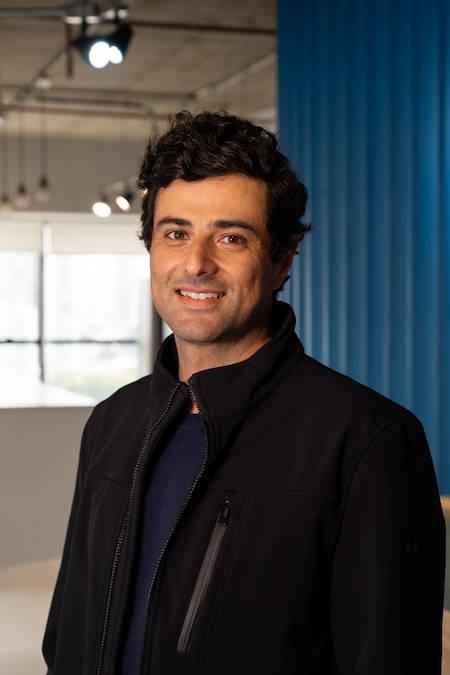Three things you probably didn’t know about Brazil’s growing fintech sector
Here in Brazil, change has been happening at a rapid pace. More than 75% of the nation’s 215 million people have smartphones, and they are increasingly urban: more than 85% live in cities. The adoption curve for smartphone-enabled digital services has been steep, and online banking is widely used now. Urban Brazilians’ lives revolve around commercial activity, and lots of new people are coming into the banking system.
Most non-Brazilians know little about our banking system. Until recently, only three large private banks and one state-owned bank comprised nearly 100% of our banking market.
By comparison, the five largest banks in the US combined only have about a 42% market share (according to Statista). Traditionally, Brazil was a much less diverse, more monopolistic banking landscape.
Those days are over. Brazil’s banking system is rapidly moving toward one that offers more freedom of choice, and the newer choices available tend to appeal more strongly to lower-income customers.
The lower classes’ rapid adoption of mobile phones and digital services created tremendous opportunity for neobanks and fintechs to enter the market with new financial products – geared toward today’s Brazilian workers – and the seamless experiences and lower fees that the traditional banks couldn’t provide. These companies can offer better customer service because they are unburdened by legacy models for doing so.
Background on Brazil and Latin America
Brazil is the largest economy in Latin America and has the region’s largest population, and it has some unique characteristics that require creative solutions.
For example, a large portion of Brazilian micro-entrepreneurs run their business informally and thus cannot generate invoices or receipts, and these individuals rarely segregate their business from their personal finances. To facilitate the formalisation of micro-entrepreneurs, the Brazilian government created the MEI SME, a business classification focused on these micro-entrepreneurs, with special tax conditions for those whose annual earnings stay below R$81,000 (approximately $16,900).
For the MEI, formalisation is key to digitalisation and, ultimately, to business expansion through financial services, such as point-of-sale (POS) payment processing, credit, instant payment solutions and other services. This type of customer is important to address with a banking solution designed specifically for them, because they have real and specific needs but also have limited income. MEIs are generally turned off by the costly fee structures inherent to large traditional banks.
A large proportion of the Brazilian population is considered low-income (Brazil uses the designations C, D and E classes to refer to the working and lower-income classes). While these people make up a majority of the population, they also tend to be the most underserved. The C, D and E classes receive generally the lowest quality of services overall (and customer service in particular) from the biggest banks, but also they pay a disproportionately high level of fees on their accounts and transactions, in part because of their perceived higher risk.
My company and others have seen a tremendous opportunity to address the needs of these people by doing what the big banks seem unwilling or incapable of doing: offering better service and lower fees to these groups. It’s a big market, and a tremendous opportunity for inclusion: according to the World Bank, Brazil’s labor force is approximately 96.5 million people, 90 million of which fall into those lower classes.
Three key drivers of growth in Brazil
There are a few things driving Brazil’s growth that are worth highlighting:
1. During the early days of the pandemic when economic setbacks were most acutely felt for so many people, the Brazilian government-issued vouchers to a large portion of the population, but they did so via the large state-owned bank. Every Brazilian has a citizenship benefit account (in much the same way that every American has a Social Security Card), but the government vouchers could only be used in certain ways. People couldn’t just take cash out and use it however they wanted. It could be used to make bill payments for instance, but it was very challenging to actually get liquidity with that public benefit.
A loophole was soon discovered, which allowed people to transfer those funds to a digital bank, where they could have immediate liquidity. Because of this, many of the neobanks and fintech companies saw rapid growth during that period. This was a wake-up call for the population, one that inspired many people to start migrating away from their traditional banks and the state bank and look for more contemporary financial services and tools they could use in their day-to-day lives.
2. A big driver was the launch of an instant payment methodology developed by the Banco Central de Brasil (BCB, the Brazilian Central Bank) called Pix. All financial institutions were required to offer Pix and were prohibited from charging their customers for it. People in Brazil use Pix a bit like Americans use Venmo: to exchange money between friends, pay for goods and services provided by a business, or even make or receive government-related payments, all through their smartphone.
Before Pix, every bank-to-bank transfer included a transfer fee. By removing transfer fees for everyone, Pix helped level the playing field for new fintechs to come in and compete by offering new, more appealing, lower-cost services.
3. Another main driver of this trend is more general but no less impactful: the overall global trend toward open banking. Neobanks are some of the most profitable banks in the world because of their lower cost structure. They can offer competitive products and services to anyone with an internet connection, at a vastly lower cost of doing business. This has opened up more opportunities for neobanks and their customers alike.
It’s an exciting time in Brazil, we are witness to the emergence of a major new market in the global fintech economy, while at the same time watching millions of Brazilians gain access to a financial system that traditionally excluded them. It’s truly a win-win situation.













































